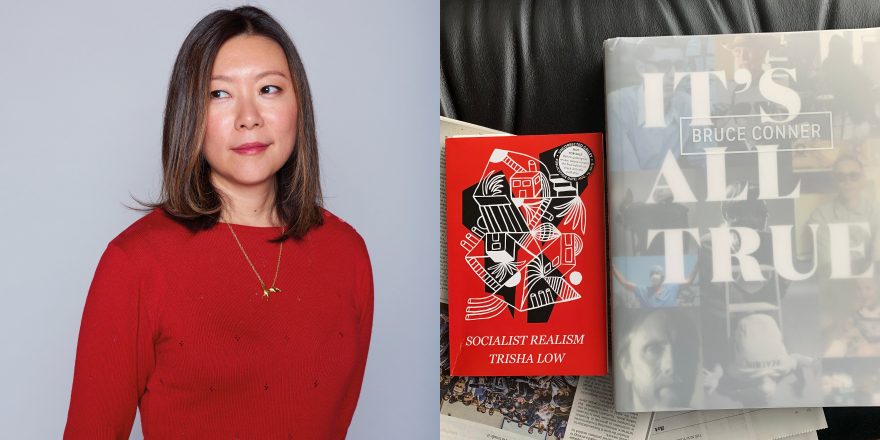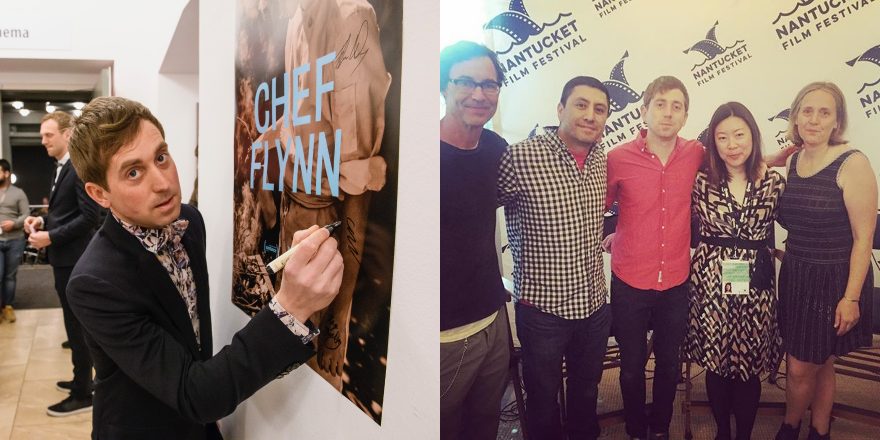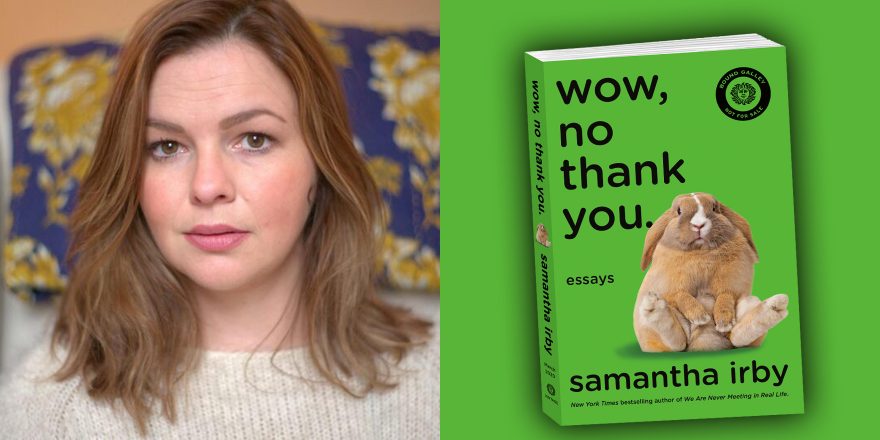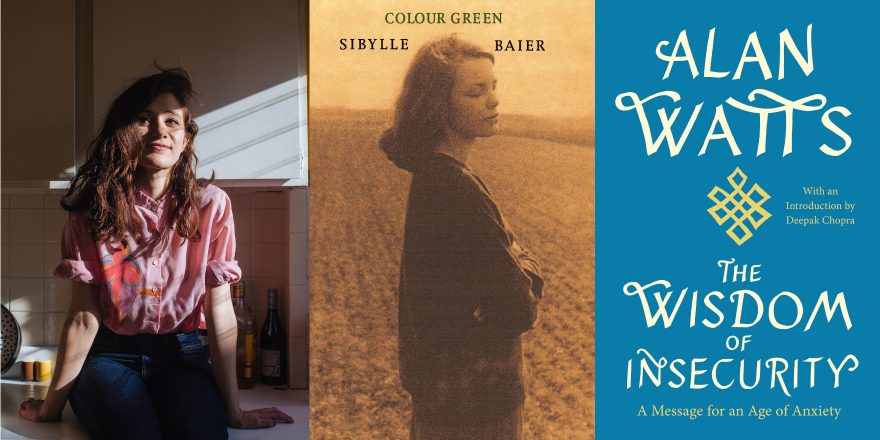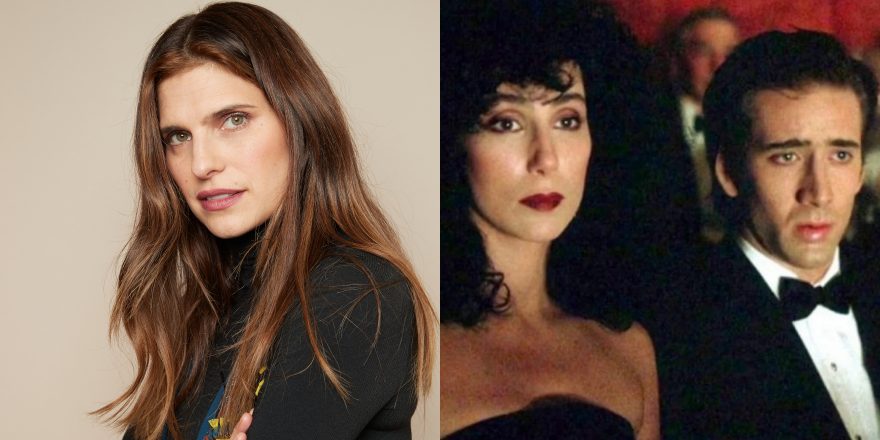Most of us are sequestered in our homes, doing our part to slow the spread of COVID-19. That includes some of our favorite artists, so we’re asking them to tell us about one thing — a book, a movie, a record, whatever — that’s helping them get through this difficult time.
Quarantine hasn’t been such a drastic change in my lifestyle because I’m basically a hermit anyway. If you’re a writer, you just stay home and write. But it’s definitely strange to look out my window and see an extremely beautiful day – with clouds on the horizon, and Downtown L.A. before me – and no one in the street.
I’m trying to be optimistic and telling myself to take advantage of the enforced time away from other people. Isn’t the upside of all this that FOMO no longer exists? I spend so much time feeling like I’m missing out on life, but right now there is no life to miss out on. I was supposed to be working on a TV show, but it’s been delayed because every production has stopped. I could use the paycheck, but that’s the way the world is. Luckily, I am also writing, so I have things to keep me busy. And so many books to read.
For me, this is a good time to comfort-watch good movies; you don’t want to take a chance on something that bums you out because it’s not that great. You just want to consume the best you can during quarantine. It’s like you’re holing up in this Scandinavian winter and exercising your greatest act of hygge, so you’re reading the best books in the world.
At the moment, I’m writing a film which has some voiceover – an adaptation of Elif Batuman’s The Idiot – so I’ve been watching movies with voiceovers, like Sasha Guitry’s The Story of a Cheat, and pseudo-voiceovers, like Phantom Thread. Working on The Idiot is fun – it’s a perverse choice because it’s not a natural fit for the movies. But that’s why I’m so drawn to it. I think I can do interesting things with it because it’s a story of obsession, which you rarely see from a young woman’s point of view. The main character, Selin, is a bit like Scottie Ferguson in Vertigo. She’s being drawn into an obsession with this mysterious boy which is driving her crazy, and she doesn’t know it. I rewatched Vertigo recently, just to remind myself what a nutty movie it is. The first half of it is a really pleasurable, fairly conventional Hitchcock gumshoe movie with beautiful colors. And then in the second half, it becomes this wonderfully deranged fever dream.
I also rewatched East of Eden, which takes place against the backdrop of the early years of the 20th century up to the beginning of World War I. During World War I, James Dean’s character makes money on the stock market by investing in beans. It was funny to watch that because that’s what’s happening right now: bean prices have shot up. It was also funny to realize that James Dean runs just like Pee-wee Herman.
Right now, I’m reading a book called Socialist Realism by Trisha Low. It’s a 150-page memoir essay about art and life and sex and home (she’s Singapore-born, Bay Area-based), and is both stream-of-consciousness and brilliantly structured. It’s beautifully written and just won the Believer magazine’s nonfiction prize. As no one’s going to notice anyone winning any literary prizes at the moment, I thought I should recommend it because it’s extremely good and people who think about art and movies are going to love it. For instance, Trisha Low has many, many thoughts about Rosemary’s Baby. She’ll write about Freud’s home office on one page and then on the next, about sadomasochistic waterboarding, with absolutely no warning. She parses everything with the same skepticism, and the same tenderness. You can call it love. It’s a book about the inadequacy of labels and how you justify trying to be an artist or writer while living the kind of free-floating internal life that we all tend to lead — minus the sadomasochistic waterboarding, perhaps. It’s great to see a greedy, questioning mind like Low’s at work. And she’s only 31!
I’m also reading and have constantly within reach It’s All True, the exhibition catalogue of Bruce Conner’s big 2015 retrospective at SFMoMA, which was so inspiring and life-changing when I went to see it. Looking at this book, which I’m so glad to have during this time, you see an artist who was every bit as good as Robert Rauschenberg, Ed Kienholz or any of his more famous contemporaries. Conner, who died in 2008, though, just never played the art game. He was not an East Coast guy; he stayed in the Bay Area and never truly broke through in that blockbuster way. But his work is so good, and he did so many things, from installations to paintings, photography, collage and film. And his inkblot works are beautifully intricate, these incredible meditative Rorschach paintings that make you feel a kind of peace just to gaze upon. It’s great to immerse myself in his work and remember what you can do while the world is going on — or not going on — around you, and how you can be creative, and just make things on your own.



